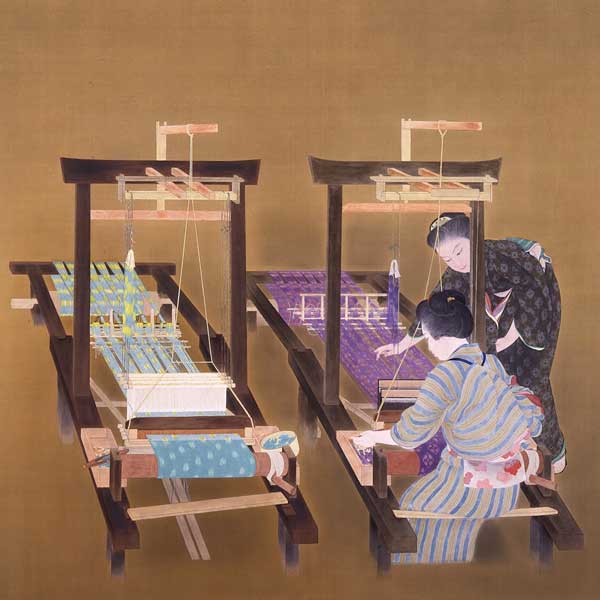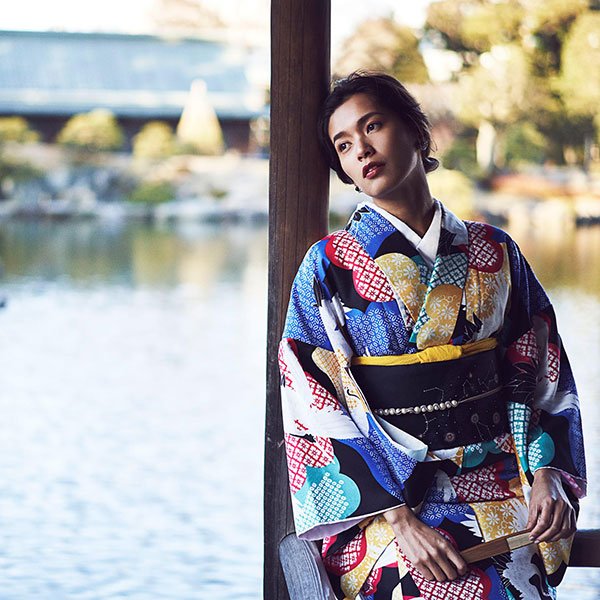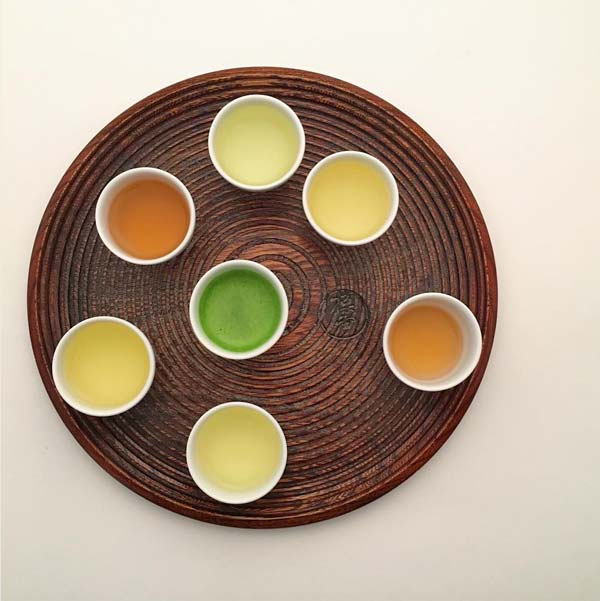20 Best Things to Do in Nikko
by Lucy Dayman | TRAVEL
© Visit Nikko, Toshogu Shrine
Home to world heritage temples, historic shrines, and a profound spiritual legacy, the mountain town of Nikko is a destination that has attracted visitors travelers for centuries. Whether you’re a history buff, or someone who loves exploring the great outdoors, or you want to settle into a hot tub with a craft beer, you’ll find something to fall in love with here in Nikko!
- 7 Must-See Historical Sites to Visit in Nikko
Must-See Historical Sites to Visit in Nikko
1. Rinnoji Temple
© Rinnoji
Rinnoji is a UNESCO World Heritage Site and considered to be Nikko’s most sacred temple. It was founded over 1250 years ago by Buddhist monk Shodo Shonin, the same monk who introduced Buddhism to Nikko in the 8th century. The site has three key areas of note; the temple's main building, the Sanbutsudo, the temple's treasure house, and a small Japanese style garden, known as Shoyoen. Inside the main building is where you’ll find towering gold lacquered statues of Amida, Senju-Kannon, known as Kannon with a thousand arms and Bato-Kannon, aka Kannon with a horse head. While the Shoyoen garden is beautiful all year round, it’s most stunning in (like most of Nikko) autumn when the trees turn a fiery red and orange.
2. Toshogu Shrine
© Visit Nikko, Toshogu Shrine
There’s no other shrine in all of Japan quite as lavish as Toshogu Shrine, a UNESCO World Heritage Site, and the final resting place of Tokugawa Ieyasu. Ieyasu was the founder of the Tokugawa Shogunate, a feudal family who ruled Japan for over 250 years. Intricately detailed, with seemingly endless layers of imagery and meaning, the shrine features a blend of Shinto and Buddhist elements. Until the Meiji Restoration in the 19th century, it was a place of worship for both religions. While the complex is home to a collection of impressive pieces of traditional Japanese architecture, one of the most notable features is the five-story pagoda. Situated in front of the main entrance gate, this pagoda was built to hang ten centimeters above ground, to prevent shrinkage of the wood over time.
If you’re enjoying the historical sites of Nikko, check out the 4 Best Shinto Shrines You Have to Visit, and the 8 Surprising Japanese Temples Guaranteed to Get You on the Next Plane!
3. Taiyuin-byo Temple
© Zairon / Creative Commons , Taiyuin byo Temple
Looking almost like the little sibling of Toshogu Shrine, the Taiyuin-byo Temple, also known as the Iemitsu Mausoleum, is the mausoleum of another shogun, Iemitsu, grandson of Ieyasu. It’s also a UNESCO World Heritage Site. While its design by temple standards is impressive, it was consciously created to not outshine its decadent neighbor, as a sign of respect for the family’s illustrious ancestor. Inspired in part by Chinese design, the building complex features golden flourishes, while its bright gate has become an iconic symbol of the area.
4. Shinkyo Bridge
© Nick-D / Creative Commons, Shinkyo Bridge
So ubiquitous with the image of Nikko is Shinkyo Bridge that it’s near impossible to miss. This sacred bridge was constructed in 1636. It is said there was a preceding bridge, but the details are lost to history. The bridge is technically part of Futarasan Shrine and up until 1973, was off-limits to the general public. Through the late 1990s and early 2000s, the bridge underwent renovations to bring it back to its former glory, and today you can stroll across the bridge and back for a ¥500 fee.
5. Futarasan Shrine
A lot more low-key than its neighbors Taiyuin-byo and Toshogu Shrine, Futarasan Shrine was also founded by Shodo Shonin in 782. Its a dedication to Mount Nantai, Mount Nyoho and Mount Taro, the area’s most sacred mountains. It’s also a UNESCO World Heritage Site, and while it may not have the gold touches of the other two Taiyuin-byo and Toshogu, it does have an extra feature: Shinkyo Bridge. Legend says this bridge was created after Shodo prayed to cross the river, and a 10-foot tall god, Jinja-Daiou appeared with two snakes, which transformed into the shape of the rolling bridge we see today.
6. Chuzenji Temple
© Rinnoji, Chuzenji Temple
Looking out onto the vibrant blue waters of eastern Lake Chuzenji, Chuzenji Temple is a Buddhist temple and home to a towering, six-meter tall statue of Kannon, the Buddhist Goddess of Mercy. It was founded as a branch temple of Rinnoji, in 784 and has remained one of the area’s most popular sacred sites. Inside the two-story temple, on the second floor, you’ll find a giant painting of a fierce white dragon on the ceiling, a piece by the same artist who painted Toshogu Shrine’s Crying Dragon. This second level is also an excellent spot to get a perfect photo of the lake in all its sprawling glory.
7. Nikko Tamozawa Imperial Villa
Once the Tokyo residence of a branch of the Tokugawa family, this structure is an impressive piece of traditional Japanese architecture and a fascinating look at how the elites lived. The villa was moved and rebuilt in Nikko in 1899, and while it was rather neglected after World War II, in 2000 it was renovated and transformed into the magnificent 106-room villa you see today.
Things to Do in Nikko for Nature Lovers
1. Lake Chuzenji
© Visit Nikko, Lake Chuzenji
Situated in the mountains just above the town of Nikko and at the foot of Mount Nantai, Lake Chuzenji, or Chuzenjiko, is the largest lake in the area and the most picturesque. The lake was formed around 20,000 years ago following a massive volcanic eruption. Today it’s a site of incredible natural beauty, from the vibrant leaves in autumn, the roaring Ryuzu Waterfall, and the steaming hot springs at Chuzenjiko Onsen. The best way to take in the scenery is to stroll along the 25-kilometer / 15-mile circumference of Chuzenjiko, enjoying the network of gorgeous walking trails.
2. Kegon Falls
© Visit Nikko, Kegon Falls
At almost 100 meters tall, this striking waterfall is the most famous in Nikko, and for a good reason. Not only is it breathtakingly big, but it’s also ruggedly beautiful. In fact, along with Nachi Waterfall in Wakayama Prefecture and Fukuroda Waterfall in Ibaraki Prefecture, this is ranked one of Japan's three most beautiful falls. This is where the water from Lake Chuzenji begins its journey to the sea. It’s an excellent place to hike to, but one of the best views is from Akechidaira Observatory, where you can see both the lake and Kegon Falls in all their glory.
3. Kanmangafuchi Gorge
© Tokyo-Narita Explorer, Kanmangafuchi Gorge
This mossy gorge was formed after an eruption of nearby Mount Nantai tore through the site leaving in its wake a blank slate to be carved and decorated by mother nature. Also known as Kanmangafuchi Abyss, it’s a scenic stroll. Along the way, you’ll find a family of about 70 statues of Bodhisattva figure Jizo, a guardian to those who have passed.
4. Kinugawa River
© Visit Nikko, Kinugawa River
Running 176 kilometers long through the center of Tochigi prefecture, Kinugawa River is one of the longest rivers in Japan’s main island of Honshu. While the river is quite calm, there are occasional rapids along the way, making it a popular river for the adventurous type who’d like to see the area by boat. Flanked by lush, overgrown foliage, the area is incredible in summer and autumn when the trees burst into bright, colorful yellows and red.
5. Akechidaira Ropeway
Akechidaira Ropeway
Situated at the top of the Nikko Daini Irohazaka Route, the Akechidaira Ropeway is a cruisy ropeway journey that takes you to the top an awe-inspiring observation deck. From there you can soak up incredible views of some of Nikko’s most stunning natural wonders including Kegon Falls, Lake Chuzenji, and Mount Nantaisan, as well as the rolling mountains covered in foliage that transform with the passing seasons.
6. Senjogahara Moor
© Visit Nikko, Senjogahara Moor
Located 1,400 meters above sea level, Senjogahara Moor, also known as Senjogahara Marshland carpets, the sprawling plateau between Yumoto Onsen and Lake Chuzenji. The best way to explore the area is to follow the Senjogahara Plateau Nature Trail. This trail runs near the shores of Lake Chuzenji, between Yumoto Onsen and Ryuzu Waterfall. It’s an easy walk that takes about 2-3 hours to complete and is best in autumn as the marshland turns shades of red and yellow.
7. Irohazaka (Iroha Slope)
© Tokyo-Narita Explorer, Irohazaka
Irohazaka is actually two winding roads that weave down the mountains of Nikko, eventually meeting at the bottom. Some of the first toll roads in Japan, they were built in 1954 and 1965. The name Iroha comes from the first three letters of the traditional alphabet of 48 syllables, and corresponding to the 48 hairpin turns in the road. While it may be a little bit of a nail-biting cruise is an incredibly scenic journey and undeniably one of the best places to visit in Nikko in autumn.
Fun Places to Go in Nikko
1. Edo Wonderland
For a bit of time traveling fun, Edo Wonderland Nikko Edomura is an amusement park all set out to look just like a 17th-century, Edo-era (1603-1868) Japanese city. With staff dressed in historically accurate period clothing, live displays - including ninja performances - restaurants, an art space, and plenty of hands-on, adventure style active like a life-size maze, it’s a fun way to get to know a little bit more about this incredibly formative era of Japanese history.
2. Nikko Natural Science Museum
Given the incredible natural beauty that surrounds Nikko, it only makes sense that the area is home to one of the country’s best natural science museums. The Nikko Natural Science Museum sits by two natural wonders, the Kegon Waterfall and Lake Chuzenji, while the mainly interactive displays focus on Okunikko and the surrounding region, offering guests information on the current goings-on in the area and the rich history of this stunning pocket of Japan. If you enjoy this location, you’ll also want to vist these 6 Best Museums in Japan Where Art and Nature Collide!
3. Tobu World Square
Himeji Castle in Tobu World Square
Tobu World Square is a novel Nikko amusement park located in Kinugawa Onsen town. The park displays replicas of famous buildings from across the globe at scaled at 1/25th of their original size. Inside the Japan Zone, you’ll find plenty of highlights including recreations of Himeji Castle and Dogo Onsen. There are also sections dedicated to UNESCO World Heritage Sites as well as a Europe Zone and an Asia Zone featuring some of the world’s most iconic landmarks.
4. Nikko Brewing Craft Beer Brewery
Craft beer in Japan has taken a little longer to hit mainstream popularity than in some other nations, but has become a hit recent times thanks in large part to independent brewers like Nikko Brewing. Nikko Brewing is a cozy, minimalistic bar and brewery that crafts – bold, flavourful and dynamic boozy blends, which you can sample at their stripped-back onsite bar. If you’re looking to get a taste of the Japanese craft beer scene, this is an excellent place to do it. If you’d like to know more about Japanese beer, check out these 5 Things You Might Not Know About Sapporo Beer!
5. Okunikko Yumoto Onsen
© Visit Nikko, Okunikko Yumoto Onsen
The town of Okunikko Yumoto Onsen is located behind the mountain range of Okunikko, a scenic pocket of Nikko National Park. Here you’ll find a community of classic ryokan inns mainly located along the western edge of Nikko city. Given the abundance of piping hot natural spring water, most accommodations here have their own hot spring baths, but the most exciting in the area has to be Onsenji, which is a Buddhist temple with its own small publicly accessible onsen.
Where to Stay in Nikko?
1. Nikko Kanaya Hotel
Nikko Kanaya Hotel is where high-end western pleasures and traditional Japanese sophistication meet. This luxury hotel features massive windows looking out on to the incredible scenery that is Kinugawa River. There are also onsen baths, karaoke rooms, and a French-Japanese restaurant onsite, where guests can also enjoy a traditional multi-course Japanese dinner served in their room.
2. Okunoin Hotel Tokugawa
Located not far from Nikko’s pride and glory, Toshogu Shrine, Okunoin Hotel Tokugawa is an impressive hotel complex that melds Japanese and western styles in a timelessly tasteful way. Guests can choose from either a Japanese or western style room. Take a soak in the large outdoor onsen baths and enjoy a luxurious multi-course meal, and relax in the knowledge that the most incredible sights of Nikko are right at your doorstep.













TRAVEL | April 26, 2024